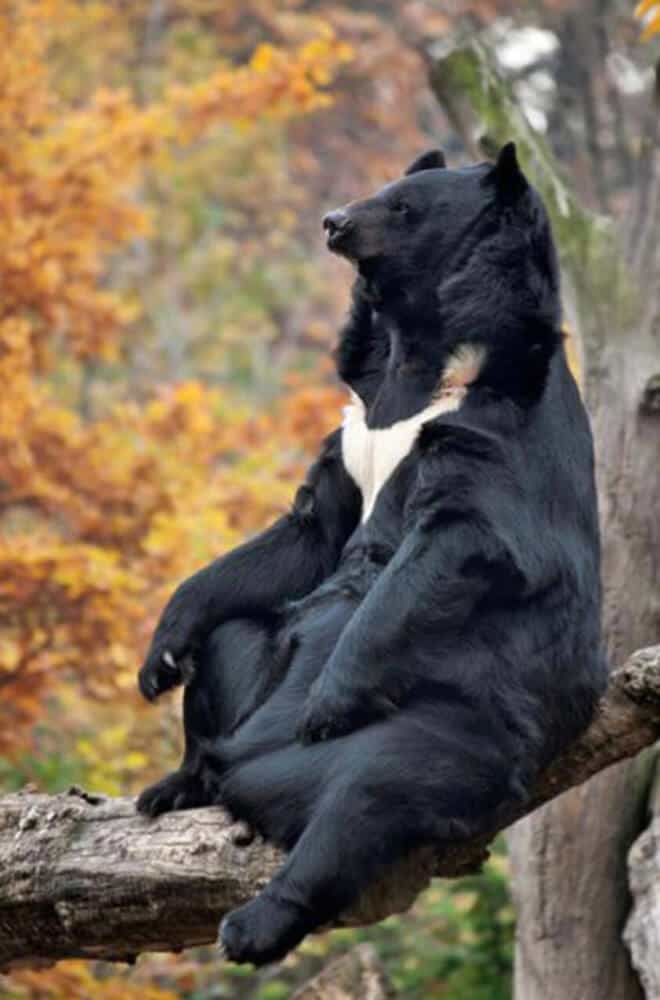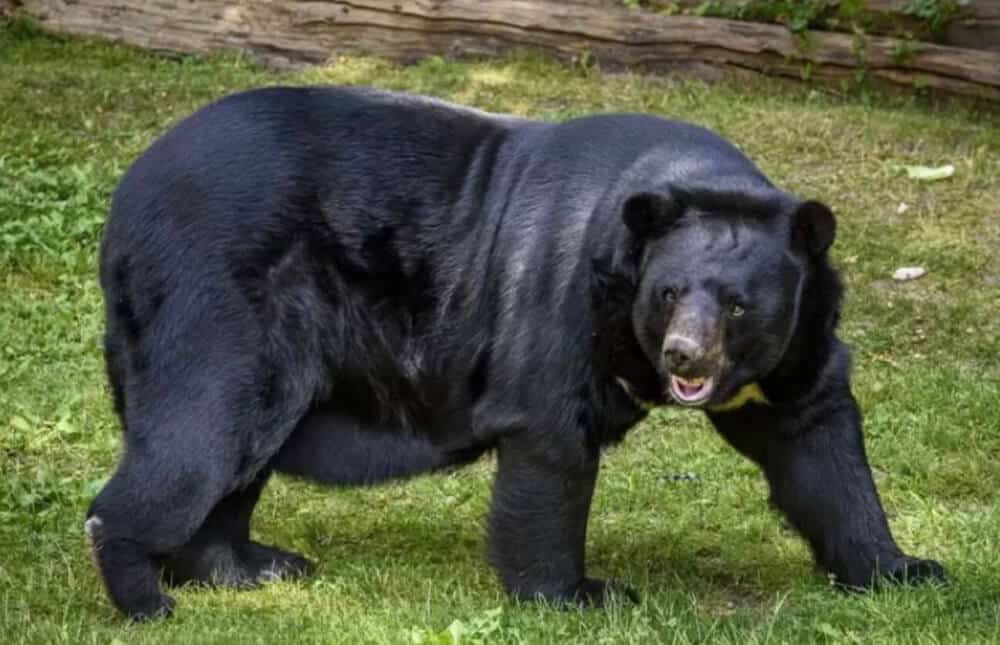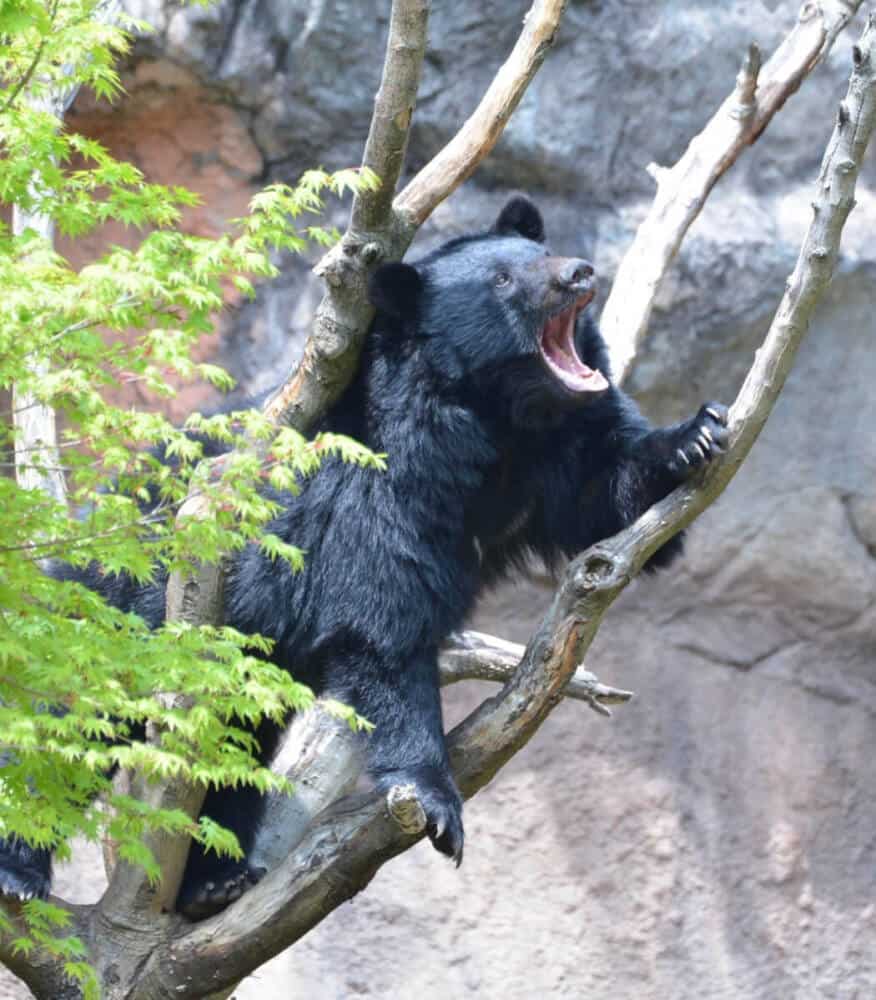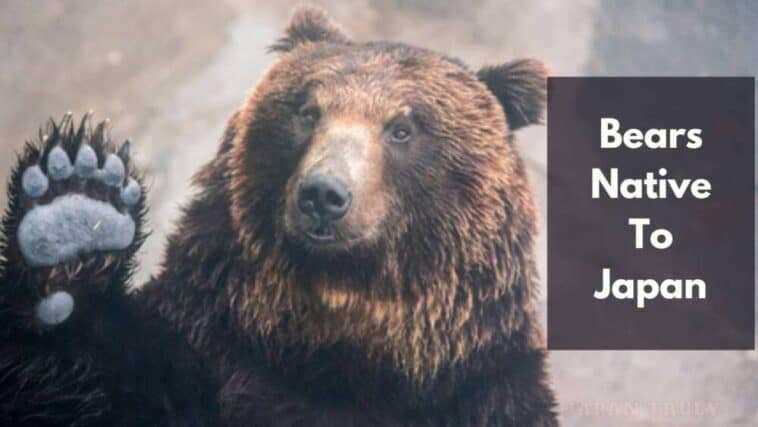Get to know the 3 species of bears native to Japan! Learn about the Asian black bear, Japanese Black Bear, and the Ussuri brown bear and their fascinating habits.
In Japan, various species of Bears are native to the country.
The Asian black bear, the Japanese black bear and the Ussuri brown bear are all inhabiting Japan and are an interesting aspect of the unique ecosystem of the country.
These species of bears, who live in various geographic locations, contain a variety of characteristics and behaviors, making studying them a fascinating endeavor.

The Asian black bears in Oku Nikko are distributed throughout Honshu and the Shikoku Islands, while the Ussuri brown bear lives only in Hokkaido in Japan. The Japanese black bear, on the other hand, is found on the Honshu and Shikoku islands of Japan.
Investigating the differences between these three species of bears native to Japan, is an exciting journey of discovery.
Page Contents
3 Bears Native To Japan
This article explores 3 different species of bears native to Japan, each with unique features and habitats.
The Asian Black Bear, Japanese Black Bear, and Ussuri Brown Bear are three bears that are native to Japan
All three species inhabit different parts of the country, depending on the availability of food and other habitat comforts.
Asian black bears in Oku Nikko are distributed throughout Honshu and the Shikoku Islands. These bears can be identified by their white crescents on their chest and wide, bear-like head.
The Japanese black bear is the second of the three species and is found on the Honshu and Shikoku islands of Japan. These bears have a similar look to the Asian black bear with white chest markings, however, the Japanese black bear has a slightly flatter forehead, smaller ears, and longer limbs.
Lastly, the third species, the Ussuri brown bear, is even more specialized as it lives only in Hokkaido in Japan. Those bears have brown fur and wider heads than the other two species. They also have a much stouter body than the other two bears, making them the heaviest in Japan.
Altogether, these three species of bears native to Japan are unique and amazing. Each species deserves to be studied and respected for their individual traits and behaviors.
This article will explain the differences between them, as well as provide information on their habitats and the difficulties they face in nature.
Asian Black Bear – Appearance, Habitat, Diet And More
The Asian black bear (Ursus thibetanus), also known as the moon bear, is a medium-sized species of bear natively found in various regions of Southeast Asia – though, in Japan, they are mainly distributed in Oku-Nikko, located in the northern part of Honshu and the Shikoku Islands.

Their dark-haired bodies often range between 120-200 cm long, and they usually have a white or yellow-tinged crescent mark on their chests – hence the nickname “moon bear”.
These bears are mainly found in deep forests, which provide plenty of food, such as acorns and chestnuts, as well as adequate space to nest, enabling them to survive in their natural environment.
Asian black bears are omnivores, frequently consuming roots, fruits, small mammals, and insects along with other vegetation.
Additionally, they’re incredible climbers and are very nimble-footed – with the ability to propel themselves in and out of trees within milliseconds.

Asian black bears are also known for their intelligence and problem-solving skills.
They’ve been observed using sticks to help them scratch and dig for food as well as using stones to break open nuts.
It’s these skills that, in part, make the Asian black bear such a crucial and unique creature in Japan’s ecosystem.
Japanese Black Bear – Appearance, Habitat, Diet And More
The Japanese Black Bear (Ursus thibetanus japonicus), also known as the Asiatic black bear, is native to Japan and has a distinctive, broad range of distribution on the two main Japanese islands, Honshu and Shikoku.

This species of bear is a medium-sized mammal, typically weighing anywhere between 50-140 kg, and can reach a maximum of 200 kg.
Usually thickset and short-legged, their fur can vary in color, ranging from black — their most common color — to brown, red-brown and even white.
The Japanese Black Bear is both timid and aggressive, typically living alone and avoiding contact with humans.

Although a solitary creature, the mother bear often looks after her cubs for up to two years, and these bears establish home ranges or territories from which they hunt, feed and sleep.
Their varied diet includes apples, nuts, honey, buds and insects, but can also include deer, rabbits, salmon, and other mammals.
When it comes to mating, Japanese Black Bears often engage in brief yet passionate encounters between October and December.
After a gestation period of up to eight months, the female gives birth to usually one or two cubs, while they’re typically independent after two years.
The Japanese Black Bear is a highly sought-after species by both poachers and hunters due to its valuable fur, with the damage continuing to impact their population numbers.
While conservation programs are in place, it’s essential to continue to protect them and ensure their population numbers remain in balance for the future.
Ussuri Brown Bear – Appearance, Habitat, Diet And More
The Ussuri brown bear, also known as the black grizzly bear is a heavily populated species of bear in Japan.
Native to Hokkaido, the Ussuri brown bear has long been an important animal in the nation.
This large, powerful bear has even been featured in the folklore of the Ainu and other Northern Japanese cultures.
The Ussuri brown bear is the only species of bear left on the Hokkaido archipelago and holds a special place in the hearts of the Japanese people.
The species is known for its strength and power. Generally, their coat color is a dark shade of brown and has distinctive whitish patches around the ears, mouth, chest and paws.
The Ussuri brown bear is especially unique due to its diet and behavior.
They predominantly feed on salmon but also consume mushrooms, nuts, insects, grasses and other plants. During the summer, these bears can often be seen grazing in fields and gathering food to sustain them during the winter season.
As a result of human encroachment into their natural territory, Ussuri brown bears have sadly been affected.
This species is now classified as an Endangered Species of Bear in Japan.
In an effort to protect this native population, numerous conservation initiatives have been put in place, such as protecting the bear’s habitat from deforestation and enforcing regulations against bear hunting.
The Ussuri brown bear is truly a unique species of bear, native to Hokkaido, that should be protected for future generations to enjoy.
Their robust body, agile movements and majestic presence make them an incredible sight to behold.
Conservation Efforts To Protect Bears Native To Japan
Conservation efforts to protect the bears native to Japan have become more and more of a priority in recent years, as their numbers and habitats continue to be challenged by human encroachment and climate change.
The Asian black bear, Japanese black bear, and Ussuri brown bear are all now considered to be vulnerable species, and efforts to protect them have become increasingly urgent.
Unfortunately, the varying population and distribution of each species of bear across Japan mean that the needed conservation efforts differ between species.
For instance, Asian black bears in Oku-Nikko are a species of special concern, and are distributed throughout Honshu and the Shikoku Islands, while the Ussuri brown bear is only found in Hokkaido in Japan.
Furthermore, the Japanese black bear is the most widely distributed species in Japan, but their numbers have declined since the mid-twentieth century, and are now found on Honshu and Shikoku islands.
To help protect these species, there have been several initiatives implemented and proposed, such as the Japan Bear Network, a collaboration between all levels of government, researchers, and non-governmental organizations (NGOs) to support conservation efforts and protect bear populations.
There have also been calls for increased public education and awareness campaigns for the public about the imperiled state of bear species, as well as for increased authority for wildlife conservation officers in regard to protecting their habitats.
Ultimately, the conservation and protection of these species require increased effort and engagement from all stakeholders. With the right commitment and protections, it is possible to ensure that bear species native to Japan are able to thrive in the future.
In conclusion, the three bears native to Japan – the Asian black bear, Japanese black bear and Ussuri brown bear – provide a fascinating insight into the diversity and complexity of the bear population in the country.
While Asian black bears in Oku Nikko are distributed throughout Honshu and the Shikoku Islands, the Ussuri brown bear lives only in Hokkaido, with the Japanese black bear found on both Honshu and Shikoku islands.
The ability to observe these species of bears in their natural habitats is a unique and awe-inspiring opportunity that cannot be overstated.
It is clear that there is still much to be discovered about the lives of these creatures, and Japan is the perfect setting for uncovering such answers.
Also Read
My writing focuses on the various aspects of Japanese lifestyle, from traditional tea ceremonies and flower arrangement to modern fashion trends and pop culture. Through my articles, I aim to share my passion for Japan and provide readers with a glimpse into the rich and diverse world of Japanese culture.
I believe that the key to understanding Japanese lifestyle is to appreciate the balance between tradition and innovation. While Japan has a rich cultural heritage that dates back centuries, it is also a country that is constantly evolving and embracing new ideas and technologies.
Whether you’re interested in learning about the latest fashion trends in Tokyo, or want to explore the ancient art of calligraphy, my writing will take you on a journey through the many facets of Japanese lifestyle. So join me as we explore the beauty and complexity of this fascinating culture together!





